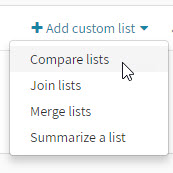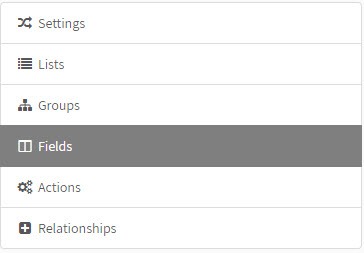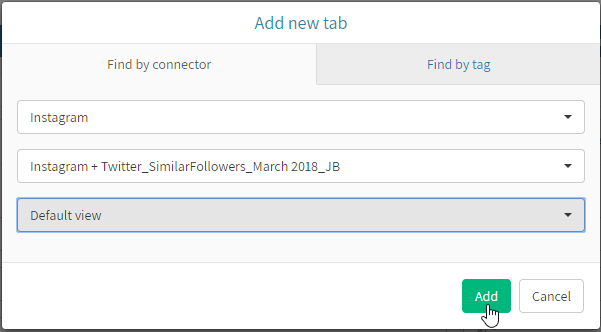In this example, we are comparing data from Instagram and Twitter to see if we have common followers between the two social media accounts so that you can find those similarities. If you need to find differences instead, just choose “Show differences” for the Comparison type in Step 6.
Important Tip
A compare list is used to find similarities or differences between two lists using fields with a common field type like an email.
The steps below detail how to compare data from two separate connectors. This scenario compares two standard connector lists using the common field “Name”.
First, you will create the Compare List Container, then select which lists you will be comparing, and then configure your compare list to show the data important to you.
1. Click on your “Home” tab.

2. Then click on “Connectors” on the left navigation under Start.

3. Next click on the edit icon next to the connector that you would like the compare list to show up under.
Best Practice:
Select the Connector you view as the ‘master’ source of data for your compare list.
4. Now you click on “Lists” on the left navigation menu.

5. Your default lists available for the connector are listed on the List page. In addition, you have a Custom lists section. If you have not created a custom list for this connector yet, you will have the four links as options as shown here in the first image. Click the option that says “Click here to add a custom list that compares 2 lists”. If you have already created custom lists for the connector you will see your custom lists here and a “+ Add custom list” button. Click the “+ Add custom list” and choose “Compare lists” from the dropdown. For more information on each type of list, please see the following Knowledge Base article: “Getting to know custom lists.”


6. Now you are ready to create your compare list starting with completing the List settings: give the compare list a name, for item name in this example it is “Followers” and the item singular is “Follower”, and then choose the Comparison type.
Best Practice:
When naming your list, it is recommended that you develop a naming convention for your lists such as: Date, Description, Use, Initials for future reference/use.
For example: “ContactContact + Shopify_EmailCampaign_March 2018_MH”

The data you input on this screen will save automatically.
7. Now you will select which lists you will compare. For the Compare from list we will choose Instagram for the connector and Followers for the list. Then for the Compare to list we will choose Twitter for the connector and Followers for the list.

8. Next you will choose the matching fields to compare and add the fields you want displayed on the compare list. Click on “Fields” on the left navigation menu and then “Click here to add matching fields”.
In this example, we are comparing the From field “Name” from Instagram to the “Name” field from Twitter. Once you have selected your fields to compare, click the “Add” button.


9. Now you can set your fields you would like to display on your list.

10. After you have added the fields to compare and have set your fields to display on the list, you can now set your default fields for your list so that they automatically show when you add your new compare list to a new tab. From the breadcrumbs showing where you are currently, click on “Connector” to go back to the edit options for the connector.

11. Now you want to go to edit the default fields for your list by clicking on Fields on the left navigation.

12. From the “Select list” drop down at the right of the Fields section, choose the name of the compare list you just created and select which fields you would like to see as the default.

13. After you selected your default fields, your list is ready to be used by creating a new tab. Click the “+ Add new tab” button. Select the Connector in which you added the compare list. In my example, it is housed within the Instagram connector.
Next, select the Group if you added your list to a group. In my example, it does not have one.
Then select your compared list from the drop down list and select “Default View” for the favorite.
Click the “Add” button.

You have now created a compare list. You can filter, sort, export, or take action from your report.